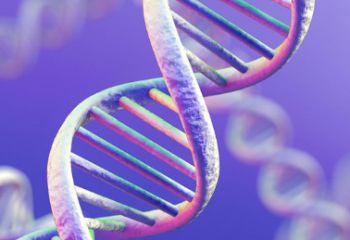milk and dairy products,
dairy farming,
Milk Production,
dairy herd,
ginetic
Is there a genetic limit to milk production?
Cow comfort and herd management, not genetics, is limiting production in most herds, say these geneticists.
 With herd averages approaching 40,000 lb of milk per cow and the single lactation record nearly double that, it begs the question: Are we approaching the genetic limits of milk production.
With herd averages approaching 40,000 lb of milk per cow and the single lactation record nearly double that, it begs the question: Are we approaching the genetic limits of milk production.
In a word: No, say Kent Weigel, a geneticist with the University of Wisconsin and Chad Dechow, a geneticist with Pennsylvania State University.
«We really aren’t,» says Weigel. The same question was asked 40 years ago when Beecher Arlinda Ellen produced 55,561 lb of milk in a 365-day lactation. That record wasn’t broken for 19 years. But then, the record toppled—again and again and again. Last year, Ever-Green-View My Gold-ET, set a new single lactation milk production record with 77,480 lb in 365 days. In percentage terms, My Gold out-did Ellen by nearly 40%!
«I think we have a little way to go before we reach the limit,» says Dechow. «If you look at the Predicted Transmitting Ability for milk on these record cows, they’re just slightly above average».
The other way to look at, says Weigel, is to consider feed intake as a multiple of the maintenance requirement. In the 1980 and 1990s, top cows were producing maybe five times their body maintenance levels. «We didn’t have any cows at 6 or 7X maintenance; now we do», he says.
«So there’s no evidence we’re hitting a limit, but at some time, we might simply reach the physical capacity of the udder, I guess».
At what cost?
«To me, it more a question of cost,» says Weigel. «Is the extra pound of milk worth the cost of producing it, and is it my best strategy for profitability? If I have to spend 99¢ to get $1 back, is it worth it? Is increasing production per cow the lowest hanging fruit on my farm?»
Selecting for larger cows, with bigger frames and more rumen capacity, is not the answer, say both Weigel and Dechow. «Larger is not more efficient; larger is actually less efficient,» says Dechow. «We actually need smaller cows to be more efficient at current levels of milk production».
Look at Jerseys. Some Jerseys are making 40,000 lb of milk, and they don’t have nearly the size and scale of Holsteins.
Health traits are becoming a larger proportion of selection indexes, which is a good thing. Unhealthy cows simply burn through calories to power their immune system. «Healthy cows produce more», says Weigel
A bigger issue might be that farmers are placing less urgency on reproduction than they were a decade ago, says Dechow. Many herds are now reliant on reproductive hormone protocols to get cows bred. But if those tools are ever lost, it could become a problem.
Inbreeding is also a concern, and it continues to increase. Bull studs are doing a good job of weeding out detrimental genetic recessives. The real issue, says Dechow, is that the industry is likely weeding out just the worst recessive genes with obvious problems.
«The ones that we don’t see as major recessives may be causing more subtle problems», he says.
Still, both Weigel and Dechow say industry selection indexes do a pretty good job of balancing production, health traits and conformation. While every herd doesn’t need a customized index, the geneticists say each dairy owner should think about what he or she is trying to accomplish with the genetics they buy.
«If there are a diversity of goals, there will be diversity of selection and inbreeding won’t be as big of a concern», says Weigel.
Genetics isn’t really the issue limiting production and efficiency, he says. «The limiting factors in most herds are cow comfort and herd management.
«Most herds are doing 70% to 80% of things right, and are getting good production. But if they can get 99% right, wow! That’s when you see production jump».
